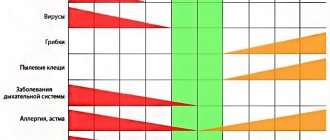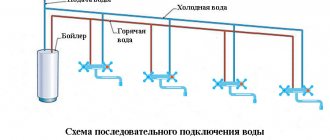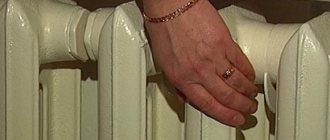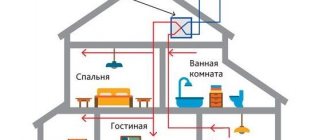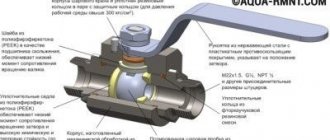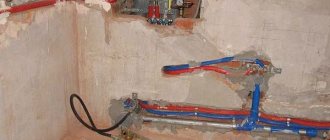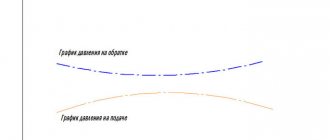And, as an option, you can quickly install an air heating system by installing a stove or fireplace. However, this option is only suitable for small houses, and one floor will be heated from one heat generator. Since it takes a long time to install an air duct system, but you don’t have time for it.
It is also possible to install gas convectors on LPG. Gas convectors can be powered by ordinary household cylinders with a capacity of 27 and 50 liters.
So, to summarize, which heating system can be chosen for quick installation in the conditions of the approaching winter:
- Heating system with radiators from any boiler except gas.
- Electric heating system with convectors distributed throughout the rooms.
- Installation of a heat generator - stove or fireplace - using solid or liquid fuel.
- Gas air heaters using liquefied gas.
Procedure before starting the heating system
Open the tap on the expansion tank.
Open the taps that shut off the coolant in the supply and return from the boiler.
Important! The listed taps must always be open; after starting the system, it is best to remove the handwheels from them completely and put them “in a visible place.”
There should be no taps at all on the safety block.
Open the valves on all radiators. And close Mayevsky’s taps.
If the heating system has collectors, then open the taps on the collectors (on the supply and return, and not those for feeding and draining the system).
If there are automatic air vents, check whether they are open: there is a black cap on top of them, which must be unscrewed so that air can escape.
Heating system adjustment
After filling the system, you need to go through all the radiators and bleed air through the Mayevsky taps: open the Mayevsky tap, first the air comes out, then the tap “spits” air with water... when only water flows, it means the radiator is filled with water, close the Mayevsky tap. And so on for all radiators.
Most likely, the pressure will drop after manipulating the radiators, so we re-charge the system to operating pressure. If there is a second floor, we bleed air from its radiators in the same way. And – we feed the system to operating pressure.
We bleed the air from the circulation pump. The pump has a screw; you need to loosen it with a wide slotted screwdriver. First, air will come out like from radiators, and then water will come out in a thin stream. After this, tighten the screw. Check the pressure and add coolant if necessary.
Important! Before going any further, listen to see if the pump is working. It happens that it does not work because its rotor is soured. Turn off the pump and fix it by: 1) unscrewing the screw in the center of the pump motor; 2) inside, at the end of the rotor, there is a slot, insert a screwdriver into it and turn the rotor; 3) screw the screw into place. Let's turn on the pump again, it simply must now work.
For 10-15 minutes. Moreover, after 1...2 minutes of operation, we unscrew the screw on the pump again, if water flows, everything is in order. When you turn on the pump, you will hear air coming out of the air vents again, this is also normal. And the pressure will drop, and we will feed the system to the 1.5 atm we need.
While the pump is running, we go through all the Mayevsky taps and check for the presence or absence of air in the radiators. And again we feed the system to the required pressure.
Now we believe (for now we only believe) that the system is completely filled with coolant (but we are not too delusional, air can leave the system for up to 3 weeks or even up to a month, especially if there is a water-heated floor; air will leave the warm floors itself through air vents on the manifolds).
How to turn on the radiator correctly for the first time
A very important point is to turn on the central heating battery for the first time in your home. When a long period of time has passed, and the thermal power plant begins to supply water to our batteries, then usually the first water flowing through the heating systems is the dirtiest and rustiest. Imagine. You have just installed a brand new battery, one might say, off the assembly line, and suddenly a powerful stream of dirt is thrown in there. It is not surprising that many batteries become clogged precisely from the first such inclusion, and then we are surprised that out of 12 battery bends, only 8 are heated, the rest remain cold. To prevent this from happening, a jumper (bypass) is needed when installing the battery. If you have done the installation correctly, then set the position of the ball valves as shown in the figure:
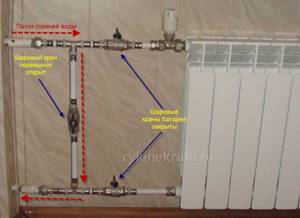
In this case, the entire flow of dirt when turned on for the first time will go through the jumper, keeping your battery intact and safe. In this option, it is better to keep hot water running for several days. Of course, many are looking forward to when it will be turned on. However, my advice is, if you can’t wait a few days, wait at least one day. By the way, here is a detailed article on how to turn off the battery.
Starting the heating system
Now everything is ready to start the heating system. We turn on the boiler (the pump must be on!) to warm up to 40 degrees.
Our concern is to go and check which radiators are heating and which are not. It is clear that the system does not warm up instantly; you will have to spend half a hour or an hour. If the radiator does not heat, it means that air is accumulating in it; bleed off in the manner described above.
Finally, we turn on the boiler to warm up to 60-80 degrees. Keep the heating system in this mode for 3-4 hours to make sure that the radiators warm up evenly and the return returns warm.
If the radiator does not heat.
If water comes out of the radiator, but the radiator still does not heat, what is the reason? If installed incorrectly, debris can get inside the pipes and accumulate in thin places, for example, in valves. Will have to clean it up. Close both valves on the cold radiator. Loosen the union nuts on the valves. Carefully drain the water from the radiator.
If the pressure in the system is working, then you can sharply open the valve on the supply pipe, and a stream of water should remove the debris. We put the radiator in place, open both valves, again bleed air through the Mayevsky tap... well, I think everything is already quite clear. After such manipulations, two positive results should appear:
1) heat all radiators;
2) you have the habit of working carefully, preventing debris from getting into the pipes.
Also: the difference between supply and return for a normally operating system is 15-20 degrees. Not more. But this also depends on the ambient temperature during the launch period. In the cold season, the system will need to “accelerate,” so to speak. And it makes sense to observe the difference between supply and return when the temperature in the room is established.
That's all, nothing complicated. If the heating system is assembled correctly, then there should be no other problems, and the heating system should start without problems .
What does the normal functioning of the heating system depend on? There are several objective factors that directly affect efficiency, reliability and maintenance of its performance. Therefore, first of all, you need to know how to properly start the heating system in the house. It is best to consider this procedure using the example of an autonomous system of a country cottage.
How to regulate heat in batteries
Suppose you put a battery of 10 bends in the room, and you feel good with it when it’s -20 degrees outside. But now, the cold has passed and now it’s been -2 degrees for several days. Hot water, as often happens with us, at the same temperature continues to flow through our pipes in a powerful stream and a gas chamber is formed in the room, from which there is no escape. In this case, the temperature regulator comes to the rescue. There are many of them in nature. In the picture below you see one of them.

What brand of thermostat should be is the topic of a separate article. And now it is important for you and me to understand the principle. The figure shows one of the simplest thermostats. It has a knob on top that you can rotate and set values from 0 to 5:

5 - means that the entire flow of hot water will pass through the battery; 4, 3, 2, 1 - means that the regulator will reduce the diameter of the flow pipe, providing less hot water flow through the battery per unit time. Thus, at 4 the battery will be colder, at 3 even colder, etc.
If you want to disconnect the battery altogether, you can set it to “*” - the water current will be very small. Practically it will not exist:

Or you can simply close the ball valves on the battery. The effect will be approximately the same:
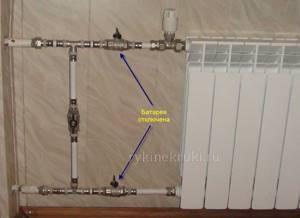
If you have 2 windows in your room and 2 radiators under them, then during installation it is advisable to install them wisely. For example, you need 20 sections for the entire room. Then it is better to put, for example, 12 sections on one battery, and 8 sections on the other. In this case, in addition to the regulator on each battery, you can completely turn off or turn on 8, 12 or all 20 sections at the same time.
Preparing the heating system for startup
In the vast majority of cases, heating is inactive in the summer. Therefore, it is necessary to check the safety and reliability of its main components, as well as carry out a number of preparatory work. Before starting a closed heating system, you need to find out the degree of deviation of its actual parameters from the calculated ones.
First, a visual inspection of the pipeline and heating radiators is carried out. For the owner, the priority question should not be how to start the heating battery. It is necessary to check its body for possible mechanical damage, and also check the reliability of the connection to the pipeline.
Along with this, the following monitoring and preventive work is carried out:
- Checking the chimney system. How to start a heating boiler if the draft in the chimney is not enough to maintain the combustion process? Therefore, they clean the internal cavity from soot and also check the integrity of the pipe. Brick structures can be "renovated" by replacing damaged bricks. Galvanized pipes may develop rust that must be removed;
- Visual inspection of pipes. Since starting the heating without this will be simply dangerous - you need to find out whether all the pipes have retained their tightness, whether there are any cracks or obvious defects in the system;
- Monitoring the condition of radiators. You need to know that before starting heating in an apartment building, the management company must warn the residents. They, in turn, check the condition of the batteries. It is not allowed to disconnect individual radiators from the network. While filling the pipes with coolant, the absence of leaks is checked.
These are general rules, without which the first start of heating is not recommended. But how to start heating in a private house correctly? To do this, it is recommended to follow a number of procedures.
A test start-up of heating in an apartment building is carried out 1.2-2 months before the start of the heating season. It is recommended to stay at home while performing it to check for leaks.
Replacing the coolant: reasons and frequency
Replacing water in a closed and open heating circuit is carried out:
- During the first heating start.
- After seasonal drainage.
- When starting after repair work.
Regular topping up of liquid is required during operation if it has not been drained after the heating season.
Why drain your home system?
A question for which there is no clear answer is whether it is necessary to drain the circuit annually after the end of the heating season? The decision depends on the type, age and material of manufacture of the main elements - pipes and radiators, as well as on the total volume of liquid.
Most often, systems with old cast iron radiators are drained for the summer. The reason is the appearance of a leak after the boilers are turned off. The old cast iron ribs are connected to each other by threaded connections with old gaskets. When there is hot water inside the batteries, the seals expand, providing a stable seal at the seams.
After the water cools, the material from which the gaskets are made naturally contracts and begins to flow at the junction of the ribs. But prolonged idle time of old radiators without water is fraught with accelerated corrosion; the rust inside the radiator and old pipes crumbles in a dry environment, and can damage the entire riser.
In closed new circuits, filling the heating system is not a costly process. But it is not recommended to completely drain the liquid every year - this is not necessary.
Frequency of replacing and topping up fluid in the heating system
How often do you need to change the fluid in your heating system? A few general rules:
- In open-type circuits of private houses, it is enough to simply add water if the system is sealed, without subjecting the old communications to stress tests in the form of long dry periods. Replacement is necessary only in case of emergency repair or preventive sealing, after washing.
- Closed heating systems require preventive flushing and replacement of the coolant after several years.
The frequency of filling with new liquid depends on the characteristics of the water, the service life of the synthetic coolant, and the general condition of the system. If the extreme points are very airy, it is recommended to identify the cause - find the location of the leak and check the tightness of the heating network. Typically, water changes are carried out every few seasons.
Filling the heating system with coolant
We need to remind you once again that before starting the heating system of the house, a visual inspection of all elements is performed. If necessary, individual units and components are replaced. Only after this can you begin the procedure of filling with coolant.
In the absence of water, a small coating of rust will inevitably form on the inner walls of the radiators and heat exchanger. Therefore, before adding coolant, it is recommended to clean the system.
Flushing the heating system
If there is still coolant left in the pipes, you need to remove it. This can be done through a special pipe located at the lowest point of the system. There should also be a make-up unit there. Only after this can we continue to solve the question of how to properly start the heating system.
For closed heating circuits with forced circulation, it is recommended to do hydrodynamic flushing. To do this, you should purchase (or better yet, rent) a special pump with filtration and a chamber for cleaning liquid.
Washing procedure:
- Connecting the pump pipes to the system;
- Launch and visual monitoring of the degree of contamination of water that has flowed through the pipeline through a full cycle;
- If necessary, replace the fluid with a new one;
- Do several rinsing cycles until the water is completely clear.
After this, crimping is performed. Before starting the heating radiator, you need to check the condition of its connection to the pipeline. It is recommended to replace the gaskets and also check the integrity of the couplings.
Video: subtleties of filling a closed system
By observing caution and starting rules, you can independently cope with adding water to the old system. At the first start, the inspection and filling must be done by the technicians who installed the heating. If you do not have the skills, do not try to fix the leak or replace the coolant in the circuit yourself. Entrust the work to a specialist - the master will select the optimal media, a cleaning agent that will not damage the internal surfaces, and will correctly fill the system.
Describe your question in as much detail as possible and our expert will answer it
Hello. Is it possible to call a specialist to start a heating system in Brovary?
Good afternoon, dear readers! Today I will continue the topic of central heating batteries. We will talk to you about the operation of heating batteries. Almost everyone needs this topic, and my task is to help you understand this issue once and for all. So, I hope you have already read my article: Correct installation of a central heating battery in an apartment. We will assume that the battery has been installed for you. What's next?
First start of the heating boiler
The procedure for starting the boiler for the first time before the start of the heating season depends on its model and type. But despite this, a visual check of its condition is performed. This is one of the most important stages preceding the final launch of heating in a private home.
The heat exchanger is one of the most “vulnerable” elements of the boiler. Checking it is mandatory, because during operation of the device it is constantly exposed to high temperatures. Along with the task of starting the heating radiator, preparing the boiler is one of the most important during the process.
Solid fuel boiler
Before the starting of the heating system has not yet taken place, a comprehensive monitoring of the condition of the solid fuel boiler is carried out. Its surface is cleaned of rust, and the functionality of the pressure gauge and thermometer is checked.
Then follow the following steps to properly start the heating system:
- Cleaning the firebox and ash pan from soot. This can be done with a metal brush;
- Checking the condition of the chimney. Its pipe must be securely connected to the boiler pipe.
For pyrolysis and pellet models, the operation of the electronic control unit, fans and nozzles is tested. When the heating system is started correctly, improper functioning of these elements can lead to sudden temperature changes, which directly affects the condition of other components.
In the room where the solid fuel boiler is located, flammable substances must not be stored. For fuel storage you also need to allocate a separate room or annex.
A gas boiler
Before starting a gas heating boiler, you should read its instructions. For different models, the order of steps may vary slightly. This is due to the different types of construction. This especially applies to condensation models, in which the correct formation of condensate must be monitored during operation. Without it, heating the secondary heat exchanger will be impossible.
How to correctly start heating with a gas boiler? After filling the system with water, you need to do the following:
- There is a valve at the bottom of the boiler that shuts off the flow of water into the circuits. After the end of the heating season it can be closed. Therefore, you need to open it - the pressure gauge readings will change. The pressure value should not exceed 3 atm;
- After heating the coolant, you need to open the make-up tap again. If there are air pockets left in the system, you can remove them using Mayevsky taps. The pressure in the system may decrease slightly during this stage;
- In fact, you will have to start the heating radiator 2 times. The first - during filling with coolant, and the second - when turning on the boiler;
- The correct functioning of the boiler is controlled by the values on the dashboard.
The result of starting heating in a private house should be a stable temperature regime of the entire system, as well as the absence of pressure surges in the pipes.
Often, the service for the first start-up of a gas boiler is provided by specialized service centers from manufacturers. Their prices are much lower than other companies.
Very important information
Below we will describe situations when one or another inclusion of the battery may be undesirable, and sometimes unacceptable!
By reading my blog, you are probably making repairs.
this page to your bookmarks . This is where all the useful home improvement stores are located.
| Not every plumbing store sells heating regulators. Here is a fairly powerful catalog with a large selection of thermostats, which can be filtered by price and manufacturer. |
4.1.You cannot use the thermostat without a jumper
In point 2 we talked about the thermostat. However, you need to understand that experiments with a temperature controller are only possible with a jumper! If it is not there, and you reduce the diameter of the flow pipe, then the total flow of hot water through your apartment will decrease. Which of course is unacceptable, otherwise your neighbors will come to you!
4.2. The thermostat may become clogged
If you are using a jumper, but for some reason it was turned off for a while and the thermostat was set to position 5, i.e. provided a full flow of hot water only through the battery, as shown in the figure:

then everything seems to be fine. However, we must accept reality as it is. Even if we turned on the central heating radiators correctly for the first time, there is no guarantee that, for example, in a month or two a new mud flow will not pass through the pipes. But then, if the jumper is turned off, then the splash of dirt will go straight to your thermostat, which, in fact, is very sensitive to it. As a result, a blockage forms in the thermostat, and water will not flow into the battery at all. It won’t go into the jumper either, because you closed it. Therefore, in this situation, water will stop flowing through your apartment; in the house, through your heating riser, the water will also stop and begin to cool in the cold. As a result, a squad of evil neighbors, together with the chairman of the HOA or housing cooperative, is guaranteed to enter your apartment.
It is clear that switching on according to the above figure is similarly not acceptable for the regulator positions 4,3,2,1,*
4.3. The jumper must always be on
Make it a rule that it doesn’t matter whether you use a temperature controller or not, but the jumper should always be on. This way, you will always ensure hot water flow through your apartment. When does it make sense to turn off the jumper? For example, when you feel that the battery is clogged. Then you let all the water flow through the battery by disconnecting the jumper. Perhaps a more powerful stream of hot water will be able to push through the stuck dirt. But this needs to be done for a short time and only under your control - you cannot leave the situation like this and go to sleep. The fact is that if the dirt cannot be pushed through, then a congestion will form again: water will not be able to pass through either the battery or the jumper.
4.4. During installation, the thermostat must be installed behind the jumper, i.e. directly in front of the battery
This is mega important, because if it is installed before the jumper, then when you first turn it on, dirt will definitely clog your thermostat, and you will start the heating season with a complete rewiring of the battery:
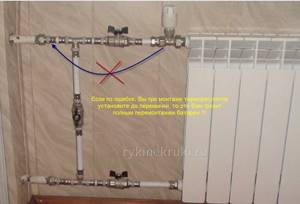
4.5. Avoid outright carelessness when installing ball valves in different positions
This installation of ball valves in your system will again ensure that your neighbors come to you:

You just completely turned off the water :).
Well, that's all, dear readers! I tried to tell you in as much detail as possible about the nuances of operating heating batteries!
Have you ever accidentally blocked the heating pipe in your house?
Is it possible to leave the heating system without water in the summer?
Do not completely block the flow of water to the radiator. Turning off the radiator is possible only during the period of pressure testing (a set of works to identify faults) of the heating system.
Do not leave a heating system with aluminum radiators without water for more than 15 days a year.
In what position should the supply valves be located?
With regard to supply taps, it would be correct to do this: close the bottom tap, open the top tap. With this position of the taps, the presence of water in the battery throughout the entire period: spring - summer - autumn - winter will be ensured, there will be no threat of vacuum formation and everything will be fine with the battery.
What will happen if you don’t turn off the taps?
When the hot water supply starts and stops, all the rust flows through the pipes. If the taps are not turned off, very dirty water will pass through the battery and the battery may become clogged. However, if for some reason both supply taps must remain in the “closed” position, be sure to open (unscrew) the Mayevsky tap. Otherwise, the radiator may rupture due to a chemical reaction between the additives contained in the coolant and aluminum. Please note that if the radiator ruptures, this will not be a warranty case!
What if you turn off both taps?
As the water begins to cool, its volume in the battery will begin to decrease. This will cause a vacuum to form there. Why is he so scary? Your battery will experience severe pressure once a vacuum begins to form inside it. It will either become deformed or crack. To avoid this, after the end of the heating season, you should never turn off both taps!
What to do when a new heating season approaches?
After you have learned that the heating will be turned on the next day, remember that at the moment the water is supplied, the rustiest water will flow through the pipes. To avoid clogging the battery, turn off both taps! The jumper (bypass) must be open at this time!
When hot water is supplied, it will flow through the bypass. We advise you not to turn on the battery for the first couple of days. Let all the rust pass by your radiators!
From the bypass, the water in the battery will begin to heat up slightly, which will lead to an increase in pressure inside the battery, but this should not scare you. A slight increase in pressure cannot lead to deformation of the radiator.
1-2 days after supplying hot water through the jumper, open both taps on the battery.
That's it, you and your heating system are ready for winter!
After installing brand new heating radiators for a considerable amount of money, many people want to extend their service life and not lose heat transfer, or prevent them from becoming clogged with dirt. New radiators, unlike old cast-iron radiators, have shut-off valves that can be closed. The question immediately arises: should we block it or not?
To answer this question, it is advisable to find out whether your housing office is bona fide or not. Namely, whether it keeps the system filled with water when the heating is turned off or not.
The fact is that the main enemy of metal is corrosion. It manifests itself to a lesser extent when the system is dry or when it is completely filled with water, without air access. The fertile environment for destruction is moisture and oxygen. According to standards, the system should always be filled with water, but many management companies ignore this. Firstly, during repairs, the system has to be drained and then refilled, wasting time. Secondly, water is now metering devices and real money. If over the summer 10 people in a house decide to change or repair the batteries, the system will have to be drained and filled 10 times, and it’s good if you can drain individual risers and not the whole house at once, as, for example, I have. This is where some companies sin by not filling the tubes with water at all in the summer. Naturally, a closed system cannot dry out and moisture remains there. As already mentioned, air and moisture are excellent catalysts for corrosion.
Therefore, if your management company is not conscientious, it is better to close the cut-off valves on the eve of the end of the heating season. This can be done if, with the radiators closed, the coolant can flow bypassing them (along the riser or through a jumper). More on this below. Additionally, open the air bleed valve - to get rid of excess pressure that arises from a temperature difference or during a chemical reaction of the metal with the coolant, if the quality of this very metal and (or) coolant is not very good. The main thing is this tap, correctly it is called the Mayevsky tap, then don’t forget to close it.
You can check whether a company is bona fide or not several times during the summer. To do this, open the top valve and the air bleed valve. If water or first air then water presses through the faucet, there is water in the system. At the same time, the bottom valve, which remains closed, will not allow water to escape from your radiator if the system is not full.
The question logically arises: why check anything at all? It's better to block everything. It turns out not always.
Radiator with jumper
If you have a jumper next to the radiator, you can close the shut-off valves and not have to monitor whether there is water in the system or not.
Radiator without jumper and riser
If all the coolant flows through the battery and there is no jumper, the batteries should never be shut off.
Radiator without jumper with riser
If the riser goes through your apartment, and there are no jumpers near the radiators, then with the shut-off valves closed and a conscientious company filling the system with water for the summer, air pockets may form in your pipes, from the riser to the battery. The same air and moisture. Therefore, if the management company is in the habit of keeping the system filled with water, the shut-off valves can be kept open. This can help avoid air pockets when filling.
As for closing radiators or not while flushing the heating system, if the radiators are new and have been used for the first 1-2 years, close them. It will drag in more dirt than it will wash off. Ideally, they should be opened a day after turning on the heating in the house, after the main dirt has gone away. Once every 1-2 years, it is advisable to remove the radiators and wash them yourself with hot water. Close attention to each radiator is clearly better than a general system flush. Fortunately, these are not cast iron batteries. They are removable perfectly, and you can wash them with a shower hose, twisting the watering can off it and removing the gasket so that it does not get inside.
Before removing, do not forget to close the shutoffs and lay a rag on the floor, or better yet, a thick film and a rag on top. Radiators may leak a natural black slurry that will be difficult to clean off the floor. They should also be placed in the bathroom. To protect against damage and heavy dirt. In general, the question of whether or not to shut off batteries should be guided by logic: - Heating radiators (batteries) must be constantly filled with water. — There is no need to expose them to excess pressure, which can occur if they are closed tightly. This means you need to leave the upper shut-off valve open while the lower one is closed, or close both shut-off valves and open the Mayevsky valve. Provided that your blocked battery does not disrupt the circulation throughout the riser. This is written above.
The question of whether or not to cover bimetallic radiators in the summer is similar to the question of whether or not to cover aluminum ones in the summer. The above is true for both types. The difference between them is that bimetallic radiators can withstand greater pressure and are less likely to release gas when the metal interacts with the coolant. Despite this, the rules must be followed for them as well.
Good afternoon, dear readers! Today I will continue the topic of central heating batteries. We will talk to you about the operation of heating batteries. Almost everyone needs this topic, and my task is to help you understand this issue once and for all. So, I hope you have already read my article: Correct installation of a central heating battery in an apartment. We will assume that the battery has been installed for you. What's next?
Starting the heating system
During the warm season, the heating systems of private houses are idle. In some regions of our country, the period when the heating system is turned off can exceed six months. But sooner or later, usually when the outside temperature drops to +8 °C for three or four days in a row, it’s time to start heating again. Before this important event for the entire house and its abodes, it is necessary to properly prepare, check and take everything into account.
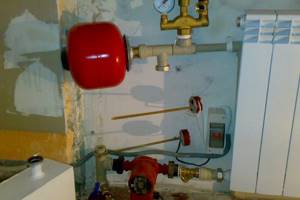
We strongly advise you not to delay checking your heating system until it gets cold. It is better to carry out all the necessary actions and test start the heating while it is relatively warm outside. If a problem is identified, you will have time to fix it. Let's get started:
- To begin with, simply check the water level in the expansion tank if you have an open type system. If necessary, of course, add coolant. Most often this is water, very preferably distilled, or, in extreme cases, boiled. Antifreeze is usually used in heating systems that are not used regularly;
- In a closed heating system where a diaphragm expansion tank is installed, the pressure should also be checked. To do this, you will need a pressure gauge installed in the boiler room on the pipeline. The average is 1.5 atmospheres. You need to focus on the fact that the pressure in the expansion tank is 10% less than the operating pressure in the system itself. If the numbers meet these standards, there is no need to add water. Low pressure may indicate a coolant leak from the system;
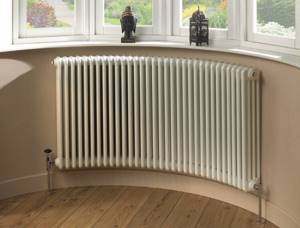
- You should go through all the radiators and bleed the air. It’s good if you have special Mayevsky cranes. Otherwise, you will need to unscrew the valves, and if there are none at all, as on old cast-iron batteries, hope that there is no air in this place. In modern heating systems, air valves are installed at the highest point of the system, in the boiler room, near the comb separators. Automatic air valves should also be checked by pressing the float mechanism - water should appear;
- We start the system to check all pipes and radiators for leaks. Particular attention is paid to joints and valve installation locations. Often, leaks can be barely noticeable; you need to wait, supply water under slightly increased pressure;
- The operation of the circulation pump must be checked. Due to long periods of inactivity, the rotor may become soured. Experts advise, even in the summer, to start the heating system pump at least once a month for a couple of minutes to avoid problems with its operation. Modern models have an automatic periodic start system that will work in the summer, of course, if the owners do not disconnect the pump from the power supply. In addition, with the circulation pump turned on and running, you need to slightly open the central plug and wait until water begins to flow out from under the plug to make sure that there is no air in the device;
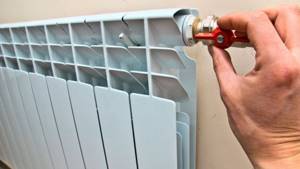
- Dirt filters for coolant should be cleaned at least once a year. Before starting the system, it’s time to carry out this procedure;
- We check the condition of the chimneys if the house has a boiler with an open combustion chamber - this is a very important procedure. Checking the draft and cleanliness of the chimney will be the key to its normal operation;
- After all stages of checking the system, a trial start of the boiler is carried out. Experts advise to start by turning the heating on low, waiting an hour and turning it off. Then turn it on at a higher temperature and leave it for two hours to make sure that all radiators heat up evenly, the pump does not make noise, and everything is in order with the boiler.
If you have any questions on this topic, ask them to the experts and readers of our project here.
Did you like the article? Then support us, click
:
In what order should the taps (valves) in the batteries be opened and closed?
There are two taps on the battery. They say that if you close them in the wrong order, you may experience water hammer.
For heat to enter, it is first necessary to bleed air from the radiator, so first we open the Mayevsky valve (bleeder) and make room for further steam (water) to enter.
As soon as the air is released, open the main valve (at the inlet) and wait for the batteries to start warming up. Water hammer is a real phenomenon, but it happens extremely rarely in apartments, so to avoid an accident you must follow simple instructions.
- When starting the heating radiator, you first need to bleed the air from the battery.
- Therefore, first we open the air valve, then the tap to open.
- Once water flows from the battery through the air valve, this will mean that the air has been released.
- We open both taps fully, the system will start working (water will circulate).
Is it possible to leave the heating system without water in the summer?
Do not completely block the flow of water to the radiator. Turning off the radiator is possible only during the period of pressure testing (a set of works to identify faults) of the heating system.
Do not leave a heating system with aluminum radiators without water for more than 15 days a year.
In what position should the supply valves be located?
With regard to supply taps, it would be correct to do this: close the bottom tap, open the top tap. With this position of the taps, the presence of water in the battery throughout the entire period: spring - summer - autumn - winter will be ensured, there will be no threat of vacuum formation and everything will be fine with the battery.
What will happen if you don’t turn off the taps?
When the hot water supply starts and stops, all the rust flows through the pipes. If the taps are not turned off, very dirty water will pass through the battery and the battery may become clogged. However, if for some reason both supply taps must remain in the “closed” position, be sure to open (unscrew) the Mayevsky tap. Otherwise, the radiator may rupture due to a chemical reaction between the additives contained in the coolant and aluminum. Please note that if the radiator ruptures, this will not be a warranty case!
What if you turn off both taps?
As the water begins to cool, its volume in the battery will begin to decrease. This will cause a vacuum to form there. Why is he so scary? Your battery will experience severe pressure once a vacuum begins to form inside it. It will either become deformed or crack. To avoid this, after the end of the heating season, you should never turn off both taps!
What to do when a new heating season approaches?
After you have learned that the heating will be turned on the next day, remember that at the moment the water is supplied, the rustiest water will flow through the pipes. To avoid clogging the battery, turn off both taps! The jumper (bypass) must be open at this time!
When hot water is supplied, it will flow through the bypass. We advise you not to turn on the battery for the first couple of days. Let all the rust pass by your radiators!
From the bypass, the water in the battery will begin to heat up slightly, which will lead to an increase in pressure inside the battery, but this should not scare you. A slight increase in pressure cannot lead to deformation of the radiator.
1-2 days after supplying hot water through the jumper, open both taps on the battery.
That's it, you and your heating system are ready for winter!
After installing brand new heating radiators for a considerable amount of money, many people want to extend their service life and not lose heat transfer, or prevent them from becoming clogged with dirt. New radiators, unlike old cast-iron radiators, have shut-off valves that can be closed. The question immediately arises: should we block it or not?
To answer this question, it is advisable to find out whether your housing office is bona fide or not. Namely, whether it keeps the system filled with water when the heating is turned off or not.
The fact is that the main enemy of metal is corrosion. It manifests itself to a lesser extent when the system is dry or when it is completely filled with water, without air access. The fertile environment for destruction is moisture and oxygen. According to standards, the system should always be filled with water, but many management companies ignore this. Firstly, during repairs, the system has to be drained and then refilled, wasting time. Secondly, water is now metering devices and real money. If over the summer 10 people in a house decide to change or repair the batteries, the system will have to be drained and filled 10 times, and it’s good if you can drain individual risers and not the whole house at once, as, for example, I have. This is where some companies sin by not filling the tubes with water at all in the summer. Naturally, a closed system cannot dry out and moisture remains there. As already mentioned, air and moisture are excellent catalysts for corrosion.
Therefore, if your management company is not conscientious, it is better to close the cut-off valves on the eve of the end of the heating season. This can be done if, with the radiators closed, the coolant can flow bypassing them (along the riser or through a jumper). More on this below. Additionally, open the air bleed valve - to get rid of excess pressure that arises from a temperature difference or during a chemical reaction of the metal with the coolant, if the quality of this very metal and (or) coolant is not very good. The main thing is this tap, correctly it is called the Mayevsky tap, then don’t forget to close it.
You can check whether a company is bona fide or not several times during the summer. To do this, open the top valve and the air bleed valve. If water or first air then water presses through the faucet, there is water in the system. At the same time, the bottom valve, which remains closed, will not allow water to escape from your radiator if the system is not full.
The question logically arises: why check anything at all? It's better to block everything. It turns out not always.
Radiator with jumper
If you have a jumper next to the radiator, you can close the shut-off valves and not have to monitor whether there is water in the system or not.
Radiator without jumper and riser
If all the coolant flows through the battery and there is no jumper, the batteries should never be shut off.
Radiator without jumper with riser
If the riser goes through your apartment, and there are no jumpers near the radiators, then with the shut-off valves closed and a conscientious company filling the system with water for the summer, air pockets may form in your pipes, from the riser to the battery. The same air and moisture. Therefore, if the management company is in the habit of keeping the system filled with water, the shut-off valves can be kept open. This can help avoid air pockets when filling.
As for closing radiators or not while flushing the heating system, if the radiators are new and have been used for the first 1-2 years, close them. It will drag in more dirt than it will wash off. Ideally, they should be opened a day after turning on the heating in the house, after the main dirt has gone away. Once every 1-2 years, it is advisable to remove the radiators and wash them yourself with hot water. Close attention to each radiator is clearly better than a general system flush. Fortunately, these are not cast iron batteries. They are removable perfectly, and you can wash them with a shower hose, twisting the watering can off it and removing the gasket so that it does not get inside.
Before removing, do not forget to close the shutoffs and lay a rag on the floor, or better yet, a thick film and a rag on top. Radiators may leak a natural black slurry that will be difficult to clean off the floor. They should also be placed in the bathroom. To protect against damage and heavy dirt. In general, the question of whether or not to shut off batteries should be guided by logic: - Heating radiators (batteries) must be constantly filled with water. — There is no need to expose them to excess pressure, which can occur if they are closed tightly. This means you need to leave the upper shut-off valve open while the lower one is closed, or close both shut-off valves and open the Mayevsky valve. Provided that your blocked battery does not disrupt the circulation throughout the riser. This is written above.
The question of whether or not to cover bimetallic radiators in the summer is similar to the question of whether or not to cover aluminum ones in the summer. The above is true for both types. The difference between them is that bimetallic radiators can withstand greater pressure and are less likely to release gas when the metal interacts with the coolant. Despite this, the rules must be followed for them as well.
Good afternoon, dear readers! Today I will continue the topic of central heating batteries. We will talk to you about the operation of heating batteries. Almost everyone needs this topic, and my task is to help you understand this issue once and for all. So, I hope you have already read my article: Correct installation of a central heating battery in an apartment. We will assume that the battery has been installed for you. What's next?


